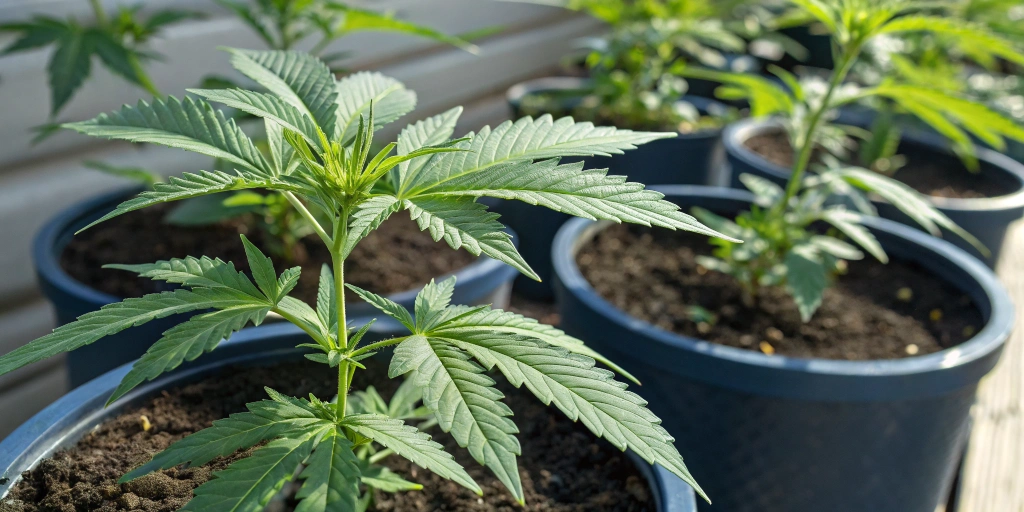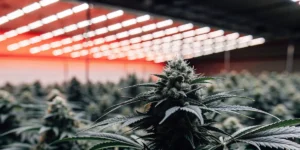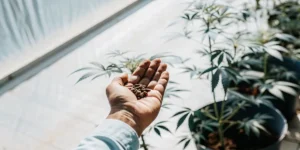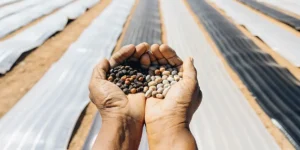Strain Background
Origins of Blue Dream
Blue Dream traces its roots to the sunny fields of California, where breeders crossed Blueberry and Haze to craft a hybrid celebrated for its balanced effects. Growers often choose blue dream cannabis seeds for their reliable genetics and consistent performance. This combination merges sweet berry notes with uplifting cerebral energy, creating a versatile cultivar that adapts to various climates. By selecting quality genetics, you set the stage for robust plants and predictable yields that satisfy both novice and expert cultivators.
Over time, Blue Dream gained widespread acclaim for its vigorous growth and impressive resin production. Enthusiasts appreciate how this cultivar responds to standard training techniques, enabling fuller canopies and abundant bud sites. Whether you aim for indoor precision or outdoor expansiveness, this strain delivers uniform results when you manage temperature and humidity. As you explore its heritage, you’ll notice stable phenotypes that flourish under attentive care, solidifying its reputation among top-tier garden selections.
Flavor and Aroma Profile
Upon opening a jar of cured Blue Dream buds, you encounter a sweet fusion of ripe berry and bright citrus that fills the senses. Terpenes like myrcene and pinene intertwine to deliver a fruit-forward bouquet that invites a deeper inhale. Growers prize this aromatic signature for its market appeal, knowing connoisseurs seek strains that engage both smell and taste. Consequently, each inhalation carries a smooth blend of sugar and zest that lingers pleasingly.
Moreover, subtle herbal undertones balance the sweetness, grounding the experience with earthy hints of pine and spice. This layered aroma profile translates into a flavorful vapor that entices smokers and vaporizer users alike. Because Blue Dream offers such a distinct sensory journey, it shines in dispensary shelves and personal collections. Maintaining proper curing and storage preserves these delicate notes, ensuring every harvest showcases its unique signature.
Typical Cannabinoid Content
Blue Dream tends to deliver a potent THC level, usually hovering between 18 and 24 percent when cultivated under optimal conditions. This strength creates an uplifting head effect that blends seamlessly with a gentle body relaxation. Cultivators aiming for maximum potency often fine-tune nutrient schedules and light exposure to push cannabinoid production. By monitoring environmental factors, you encourage trichome development that locks in the strain’s signature punch.
Testing labs confirm blue dream cannabis seeds deliver flowers that often reach those potency levels when you follow careful feeding and lighting schedules. On the flip side, CBD levels remain relatively low, reinforcing the focus on a cerebral experience. Terpene concentrations play a pivotal part as well, with myrcene, pinene, and ocimene leading the ensemble. These aromatic compounds influence both flavor and effect, contributing to soothing body vibes and mental clarity. Tracking cannabinoid ratios guides your approach to creating consistent batches that satisfy consumer expectations for premium flower.
Seed Types Available
Regular vs. Feminized
Regular seed packs contain a mix of male and female specimens, appealing to breeders who plan to develop new hybrids. When you start with regular lines, you gain access to the full genetic palette, enabling pollination experiments and trait selection. However, growers must identify and remove male plants before pollen release to protect bud quality. This hands-on approach suits cultivators eager to refine their garden’s genetic depth.
In contrast, feminized seeds guarantee a female-only crop, streamlining the cultivation process for those focused on flower production. By eliminating the guesswork of sexing, you free up time and resources for pruning and training techniques. Many cultivators prefer this option for its convenience and high success rate, as nearly every germinated seed matures into a bud-laden powerhouse. Moreover, feminized blue dream cannabis seeds deliver consistent results week after week.
Autoflowering Options
Autoflowering strains simplify the growing cycle by shifting from vegetative stage to bloom on a fixed timer instead of a light schedule. These genetics suit newcomers and indoor farmers who need multiple harvests annually. Autoflowering cultivars often finish in ten to twelve weeks from seed, offering swift turnover and predictable timelines. Small footprints and compact growth make them ideal for limited spaces or stealth gardens.
Although autoflowering variants typically yield slightly less than photoperiod peers, dedicated breeders have narrowed this gap through robust crosses. Many include cannabis ruderalis genetics to balance size, speed, and output. You can stack multiple harvests outdoors between spring and fall, maximizing your garden’s productivity. With careful nutrient management and gentle training, autoflowering lines produce impressive blooms that rival their slower counterparts.
Hybrid Variations
Breeders have released numerous Blue Dream hybrids by crossing it with indica or sativa-dominant strains to tailor specific traits. Some blends enhance resin production, while others dial up the berry aroma or flower density. This flexibility empowers growers to choose variations that match their climate, yield goals, and flavor preferences. Each hybrid offers a distinct balance of height, stretch, and effect, appealing to a broad range of cultivators.
Many variations amplify indica traits to promote bushier growth and thicker buds, whereas sativa-leaning crosses boost cerebral lift and creative energy. Hybrid blue dream lines allow you to select the perfect fit for your cultivation style, whether you crave a quick indoor turnaround or an expansive outdoor canopy. Exploring these options keeps your garden experience fresh and engaging.
Germination and Early Growth
Ideal Temperature Range
Maintaining a stable temperature between 20 and 25 degrees Celsius encourages uniform germination and healthy seedling development. During this period, soil warmth triggers metabolic activity in the embryo, kick-starting root and sprout formation. Many growers use heating mats or controlled environments to minimize fluctuations that stress delicate sprouts. By prioritizing consistency, you foster strong foundations for vigorous plants.
Once seedlings emerge, keeping room temperatures within a similar range prevents shock and aids leaf formation. Nighttime dips to just above 18 degrees Celsius can simulate natural cycles without slowing growth. Monitoring real-time readings with digital sensors helps you catch deviations early. Temperature control remains one of the most effective strategies for securing uniform germination and resilience during the first weeks of life.
Moisture Management
Seedlings require gentle moisture levels: overly wet media invites rot, while dryness halts growth. Aim for a damp, not saturated, substrate by misting lightly around the sprout base. Many cultivators employ humidity domes or trays to maintain a stable microclimate until true leaves appear. This approach balances hydration and airflow, giving tender roots a chance to establish without drowning.
After the first leaves open, gradually reduce ambient humidity and increase ventilation to prevent fungal issues. Controlled, measured watering keeps oxygen available in the root zone, inspiring healthy root expansion. Also, consider using well-draining soil mixes enriched with perlite to minimize water retention. By mastering moisture dynamics early, you set the stage for a robust vegetative cycle.
Gentle Lighting Strategies
During the sprouting phase, seedlings thrive under low-intensity light, which encourages gradual photomorphogenesis. Compact fluorescent lamps or low-power LEDs positioned at a safe distance reduce heat stress and leaf burn. These fixtures emit sufficient PAR for growth without overwhelming young plants, promoting strong but tender stems and leaves.
As sprouts mature, slowly raise light intensity and adjust the photoperiod to 18 hours on and 6 hours off for a seamless transition into the vegetative stage. Monitoring light levels with a PAR meter ensures your plants receive optimal photons without stretching or bleaching. Gradual increases in intensity sculpt sturdy seedlings primed for forthcoming training techniques.
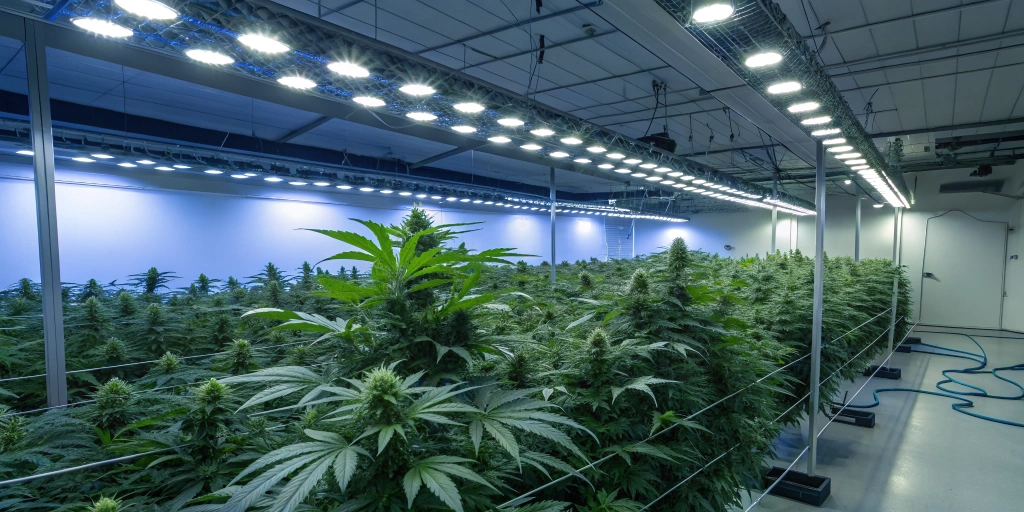
Vegetative and Flowering Phases
Training Techniques for Branching
Most growers apply topping and low-stress training to encourage lateral branching and boost bud site count. Topping the main stem after three to four nodes creates two new colas, while gentle bending and tying coax side shoots outward. This hands-on approach transforms a single stalk into a bushy canopy, maximizing light penetration and airflow.
Meanwhile, growers starting with blue dream cannabis seeds often pair SCROG nets to guide branches horizontally, spreading the canopy evenly under your lights. By maintaining an even canopy height, you capture more uniform light distribution, which equates to higher yields. Many cultivators report up to a 30 percent boost when they combine topping, LST, and SCROG methods. For best results, apply these techniques during the early vegetative stage to avoid stalling later growth.
Nutrient Schedule Adjustments
During the vegetative phase, plants crave higher nitrogen levels to fuel rapid leaf and stem growth. Growers often select balanced nutrient solutions with an N-P-K ratio around 3:1:2, adjusting feed strength based on plant response. Applying supplemental calcium and magnesium also prevents deficiencies that lead to spotting or curling leaves.
As you transition into flowering, dial back nitrogen and ramp up phosphorus and potassium to support bud formation and resin synthesis. A common switch to a 1:3:2 formula around week one of flowering proves effective. Flushing soil with pure water during the final stretch helps clear excess salts, enhancing taste and smoothness in the final product. Adjusting your schedule with care unlocks full bloom potential.
Light Cycle Recommendations
Maintaining an 18/6 light schedule during the vegetative stage stimulates vigorous growth without triggering blooms. Extended light periods allow plants to photosynthesize continuously, building a dense structure ideal for later training. Many indoor cultivators replicate this cycle for six to eight weeks, ensuring robust foliage and strong nodes.
To initiate flowering, switch to a 12/12 cycle, reproducing shorter autumn days that signal bloom time. Watch for pre-flowers around week two to confirm the change. Consistency matters: any light leaks during the dark period can stress plants and cause hermaphroditism. By safeguarding your blackout schedule, you support a smooth transition into heavy bud production.
Harvest Expectations
Flower Density and Color
By harvest time, Blue Dream flowers display tight, chunky colas covered in frosty trichomes. Buds often take on light green hues with vibrant orange pistils weaving through the calyx clusters. This density reflects a healthy development phase where consistent feeding and ideal humidity converge.
As trichomes mature, you’ll spot a shift from clear to milky and amber tones, signaling peak cannabinoid levels. Harvesting at a 50/50 ratio of cloudy to amber heads balances potency and smoothness. Sharp zoom tools help you inspect these tiny glands, ensuring you pick the perfect moment for maximum flavor and effect.
Potency and Yield Estimates
Indoor growers typically report yields between 400 and 500 grams per square meter under optimal conditions, while outdoor harvests often reach 600 to 700 grams per plant. Variables like light intensity, nutrient regimen, and training methods influence total output. Seasoned cultivators refine each parameter to push yields even higher.
Expected THC percentages often align with lab tests, recording anywhere from 18 to 24 percent when growers maintain precise control. Minor fluctuations appear based on phenotype and cure quality. Tracking past harvests guides your next cycle, helping you tweak techniques and achieve consistent potency. Persistence pays off as you learn each strain’s specific tendencies.
Drying and Curing Best Practices
After cutting, hang colas upside down in a dark space with 50 to 60 percent humidity and temperatures around 18 to 21 degrees Celsius. Slow drying over seven to ten days preserves terpenes and prevents harsh smoke. Keeping airflow gentle reduces mold risk without drying too quickly.
Once stems snap rather than bend, trim buds and transfer them to airtight glass jars for curing. Open jars for ten minutes daily during the first two weeks to release moisture and introduce fresh air. This ‘burping’ process continues for at least four weeks to develop richer aromas and smoother draws. Patience in curing pays dividends in final quality.
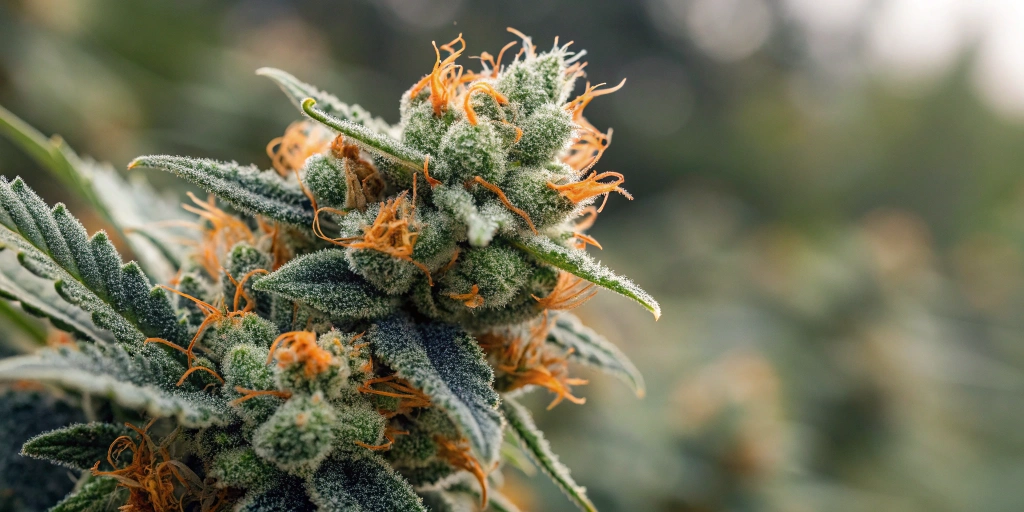
FAQs about blue dream cannabis seeds
What’s the average flowering time for this strain?
Blue Dream typically requires about nine to ten weeks of flowering before reaching maturity. This schedule lets trichomes fully develop and pistils darken, signaling optimal harvest time. Experienced growers monitor these visual cues and adjust their timeline as needed. If you manage temperature and humidity in the final stages, you help ensure buds bulk up properly without molding or premature ripening.
Does Blue Dream handle humidity well?
This cultivar copes reasonably well with moderate humidity but benefits from controlled environments to prevent bud rot. Aim for 40 to 50 percent relative humidity during flowering, reducing moisture around dense colas. Adequate ventilation and timely defoliation improve airflow, lowering mold risk. By keeping humidity in check and monitoring plant canopy, you protect your yield and preserve rich flavor profiles.
Should I expect tall or bushy plants?
Blue Dream tends to stretch during early flowering, often reaching heights over two meters outdoors. Indoor growers can manage height with training techniques like topping and LST for a bushier canopy. By applying gentle bending strategies and canopy control, you shape a compact layout without sacrificing bud count. Monitoring stretch and adjusting trellises or nets keeps your plants at ideal dimensions for any grow space.

